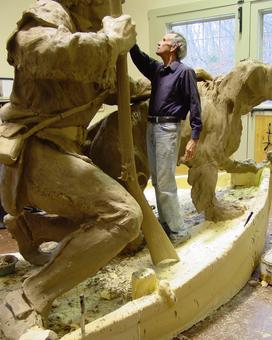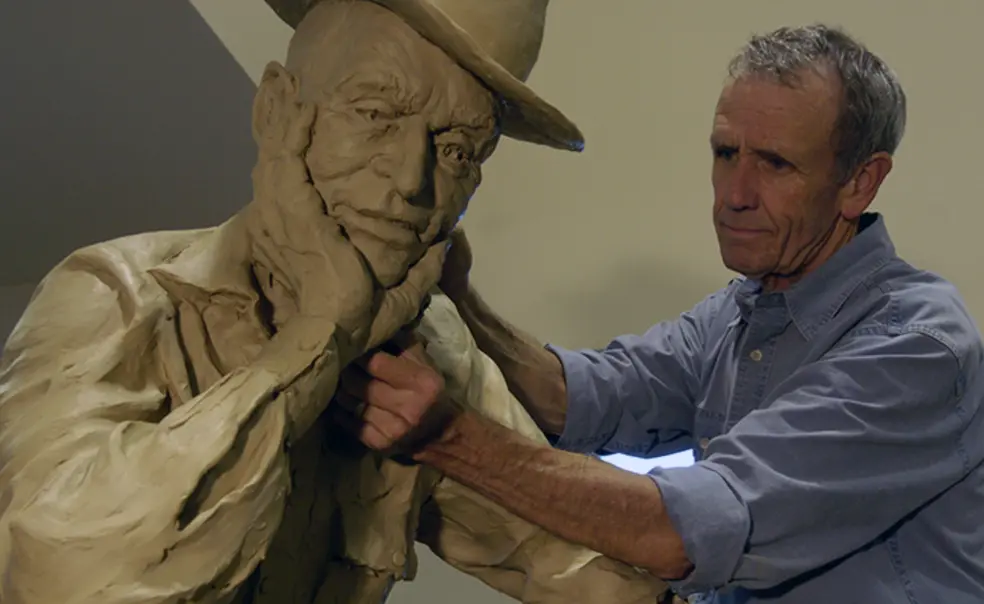When All is Gone, Harry Weber ’64’s Bronze Statues Will Stand
Weber became one of the few non-athletes in the St. Louis Sports Hall of Fame
Studies have shown that after all human life has left Earth, every trace of our existence will disappear in a surprisingly short period of time.
“The last thing to go are bronze statues,” says Harry Weber ’64, a bronze sculptor in St. Louis. “They are extraordinarily durable and they weather well.”
In that way, Weber’s life’s work and legacy won’t just outlive him — it’ll outlive us all.
“It’s a tremendous responsibility to have something that’s going to last so long.”
Weber has been an artist for most of his life. Thanks to an artistic family, he was drawing before he could talk, and he carried his sketchbook through school, his service in the Navy, and his career in advertising and marketing. In 1977, he tried his hand at sculpting.
A longtime horse enthusiast and master fox hunter, he was asked to sculpt a fox hound He had fun doing it. He made a few other animals and brought them to a gallery in New York, where just a couple weeks later they were stolen alongside the works of famous artists like Remington, Bonheur, and Mene.
“I was in great company,” Weber says. “The theft was as good as a sale, and that’s what basically started my career.”
He didn’t give up his day job until 20 years later, when he got a series of commissions for larger bronze sculptures. One request came from the St. Louis Cardinals: a sculpture of every St. Louis Baseball Hall of Fame player with a retired number.

His work is now featured at sports complexes and halls of fame across the country, including, outside Jadwin Gym: a life-size statue of renowned basketball player Bill Bradley ’65. Weber was named Sports Sculptor of the Year in 2011 by the United States Sports Academy, and his work recently made him one of the few non-athletes to be inducted into the St. Louis Sports Hall of Fame.
Overall his work is about evenly split between sports and historical figures including Dred Scott, St. Francis, and Chuck Berry.
At Princeton, Weber was very involved with the theater community, serving in leadership positions for both Triangle Club and Theater Intime. He says the performing arts continue to inform his work.
“I like to think of these sculptures as actors that don’t move much,” Weber says. “I like to make sure that all of the sculptures that I do are expressive and have an immediate emotional impact, just like theater — it’s three-dimensional static theater.”
Weber says his “stock-in-trade” is trying to make his sculptures look like they’re moving, and he’s able to do that with bronze. “It has a great warmth and vitality to it,” Weber said. “It moves, it flows, it carries light well.”
Like his art, Weber has a lot of energy. He’s sculpting several projects at the moment — he was working on one as he spoke to PAW for this story — and he says he has no plans to slow down.












No responses yet